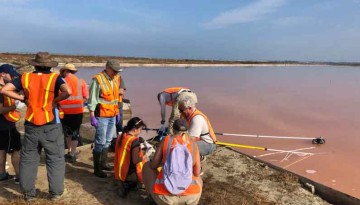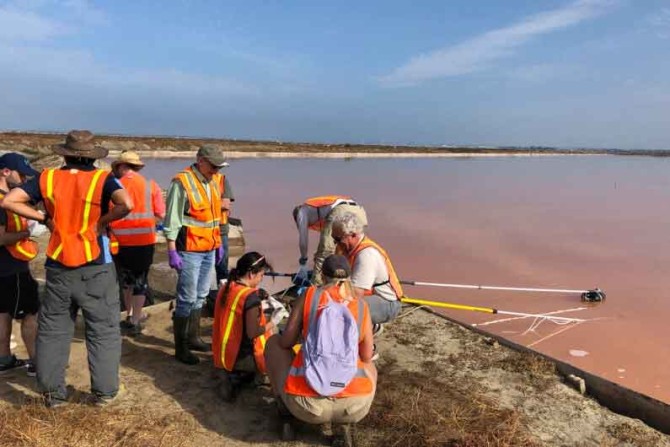Pushing the Boundaries: New Research on Microbes Expands the Known Limits for Life
A new study on microbes in extremely salty water suggests life may survive conditions previously thought to be uninhabitable. The research widens the possibilities for where life may be found throughout our solar system and shows how changes in salinity may affect life in aquatic habitats on Earth.
The research is part of a large collaboration called Oceans Across Space and Time led by Britney Schmidt, associate professor of astronomy in the College of Arts and Sciences and of Earth and atmospheric sciences at Cornell Engineering. The project is funded by NASA’s Astrobiology Program, which seeks to understand how ocean worlds and life co-evolve to produce detectable signs of life, past or present.
The new study, “Single-cell analysis in hypersaline brines predicts a water-activity limit of microbial anabolic activity,” published Dec. 22 in Science Advances. It’s based on analysis of metabolic activity in thousands of individual cells found in brines from industrial ponds on the coast of Southern California, where water is evaporated from seawater to harvest salt. The research, led by Stanford University, expands our understanding of the potential habitable space throughout our solar system, and of the possible consequences of some earthly aquatic habitats becoming saltier as a result of drought and water diversion.
“Salty environments are seen across the solar system, from Mars to Jupiter’s moon Europa,” Schmidt said. “Understanding how microbes interact with and survive in such environments on Earth is critical for the search for life elsewhere.”


